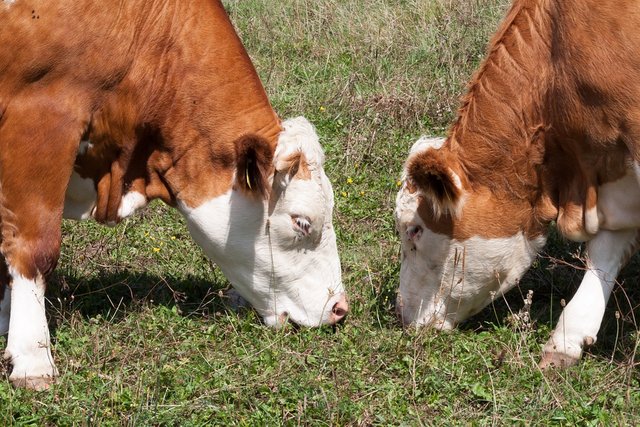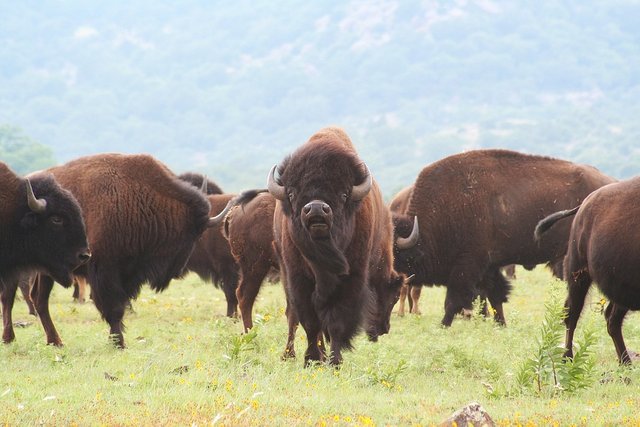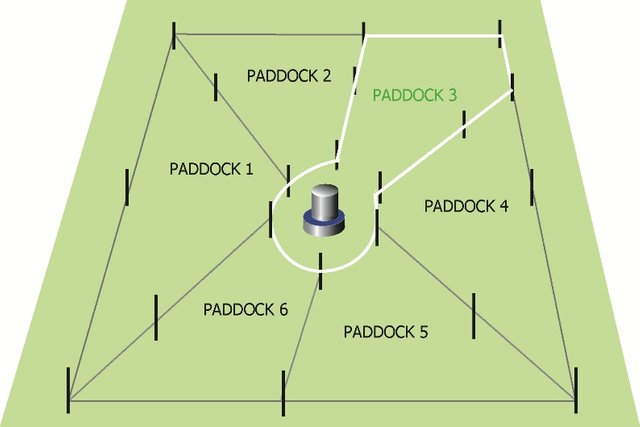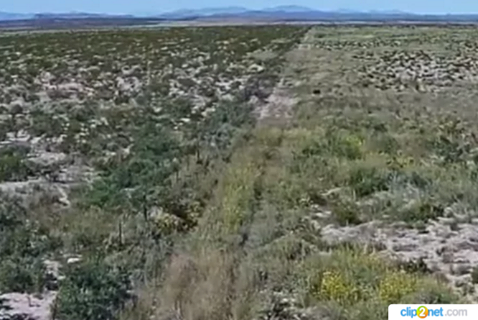Restoring Grasslands with Cattle - Long Considered the Problem, Well Managed Ruminants are Actually the Cure
Throughout the world, dry-lands have seen a reduction in productivity. Many attribute this to overgrazing, soil depletion and other contributors to soil degradation, for good reasons. But there is a solution.

Holistic land management gets to the root of the problem and works with nature to rebuild land. We discussed this in some detail in Part 2 – La Gonâve, Haiti - A Vision of Regeneration for a Degraded Land and Impoverished People. Videos from both Joel Salatin and Allan Savory are included in that article, which provides some excellent detail regarding the restoration of land through intensive ruminant management.
This can be done on any scale and in any environment. In large rain-forests, nature will generally take over and do much of the work, as long as the soil isn’t swept away. In arid regions, it could take hundreds of years for nature to restore itself, if left alone. In few cases is nature left alone. The over-hunting of one predator upsets the balance of the entire system.
Predators keep ruminants moving, as do natural migration patterns that follow food availability. When the predators no longer force herds to move, the ruminant no longer has as much incentive to move along. How much more so when they're fenced in?

Over the years, many well-meaning environmentalists have pointed fingers at ranchers for the overgrazing of the land. As a result, ranchers have been targeted by an array of asinine regulations and environmental controls that are understandable, but do nothing, or very little, to actually restore the land.
The villainizing of ranchers has been myopic, missing the mark because a little truth with a lot of misunderstanding twists the fact that it’s true that overgrazing has been a problem. But the problem isn’t that there are too many cattle in a given area (other than stockyards). The problem is that, with the loss of predators and lack of migration patterns, they are not moving like herds.
Natural herd movement promotes grasslands because, as the grazing takes place, the ground is cut, disturbed and nurtured with manure, and then they move on, leaving the land to rejuvenate over the months that follow. The cycle repeats throughout the years, promoting the health of the grasslands.
These grazing patterns can be mimicked through intensive cell grazing. The basic idea is to move the herd from one cell to the next at least weekly, though better results are being realized by moving more often, sometimes even several times a day.
The patterns need to match the size of the operation and the lay of the land. Where vast expanses are being used, a more centrally managed layout may be desired. If the terrain is more variable, a system that follows the land patterns will be more conducive to management and greater productivity.

Soils for Life

UMN Extension
If you have or manage farmland or ranch-land, consider taking a holistic approach to improving your soil. Look for alternatives that will promote the life of your soil, rather than expose, degrade and defeat the amazing biology that healthy soil sustains. Such an approach requires a great deal of work in the short-term, but far less maintenance in the long run - with much higher productivity (in some cases manyfold). And it passes land to the next generation that is growing and abundant, rather than degrading and depleted.
Nobody is promising the moon. We’ll never get lush meadows out of the SW desert of North America. But we can restore grasslands to a level that will support far more ruminants than they do today, in a manner that brings back the old flora patterns and benefits everyone.
The picture below is an example of land restored compared to unrestored land on the other side of the fence. This was done by the Circle Ranch in Texas. Similarly to much of our own desert, it had become almost all creosote. Look at how much more grass and varied vegetation is growing on the right = lots of fodder for ruminants.

Circle Ranch, Texas
In the following video, you'll see some amazing work that's been done in Mexico's Chihuahuan Desert. For these ranchers, it was coming to the point that they either had to change or literally sell the ranch. By embracing a holistic approach to their business and the management of their land, they've enjoyed amazing results.
Ranchers in the Chihuahuan Desert Grasslands of Mexico have discovered that regenerative grazing techniques and holistic management are their only salvation from an encroaching desert. Check out this video from the Bird Conservancy of the Rockies about these ranchers’ conversion to regenerative agriculture, and the transformation of their lands to a robust and functioning ecosystem.
If you're involved with a project that could use some holistic massaging, let me know. I'd welcome the opportunity to help you improve it, or even come up with a new design for your property.
Steemin' on,
Another Joe

Logo courtesy of @oecp85



It's nice to see some permaculture-related stuff on here. We have a small , completely free-range cattle ranching operation in Panama and I'm not sure if I want to keep it going , or not, when we move down there. It helps pay the bills but I'd rather do fruits and vegetables, honestly.
You can't do both?
Well, we're about maxed out in terms of head per acre so, at the very least, I would need to scale back on the number of cattle in order to some food forest stuff. I'd like to put in some swales and other earthworks and that would mean doing some fencing (fencing the cattle out of certain areas).
Money isn't everything but, since everyone there has cattle, we could do better financially if we got into being cattle brokers, opening a cattle auction, trucking livestock around and all that.
Are you doing intensive rotational grazing yet? If not, it's certainly a worthy goal. You'll certainly increase your cow-days/acre.
I'd recommend checking out the work that Regrarians is doing, if you haven't. Their platform, modeled largely after PA Yeomans scale of permanence, helps obtain a holistic and more productive design. You might find that you can design in such a way as to increase diversity into these other areas and still maintain your herd size.
Regenerative Agrarians on facebook is a good group that discusses this.
Nope. I've read some of Salatin's stuff but mostly just seen a few videos. I know how highly regarded he is, though.
Our land, shown above, is very hilly. The fencing, paddocks and whatnot will be problematic. As we stand right now my wife's brother manages the herd for us until we move there permanently, about a year. And, though he is a hard worker and a great guy, they are really stuck in his ways. Anything I want to get done using, say Salatin's methodology, I will have to implement myself once I am there full time.
That photo is from March, dry season. We just got back last week from another trip and it's mid-rainy season and the grass is tall and lush, even though the locals have told us that we are about maxed out on how many cattle we can have for the area. We have 50 acres and 47 head of cattle.
They get plenty of rain there but no one really uses earthworks to full effect, harvests rainwater from rooftops or anything like that. We do have two year-round creeks and several springs, a couple of which we've improved, though.
Wow, what a beautiful spot.
The hills are your friends and offer opportunities you can't get with flat pasture. These are a bit steep, but there is still a lot that can be done. Be careful, because swales on steep hillsides can be disastrous.
Unfortunately, the Regrarians US tour is over. It was an amazing opportunity to learn from Darren. Studying the Holistic information from Alan Savory will help, as does Joel Salatin. IMO, the holistic education from HMI would be very helpful. They have a lot of free resources on the site. This, complemented by the Regrarians Platform, could go a long way toward helping to get the land on a regenerative path. You can buy the first two chapters of the handbook, but the rest is still under development. They're amazingly rich in information.
Your situation looks really wonderful. Water in abundance and good growing conditions offer tons of opportunity. I'm a little jealous. :)
Vast herds of buffalo and antelope roomed the western and Midwest plains, they were always on the move and the land thrived. I think we can do this with domestic livestock as well. Well written article!
Exactly. It's being done by various folks around the world, with amazing success. In some cases the cow-days/acre(or hectare) has gone up as much as 8 times, even while building topsoil at an amazing rate. It's pretty cool to see what can be done.
With the application of herbicides and pecticides our soils microbiodome is dying, we return nothing back to our precious dirt, and when soil is healthy it's a huge co2 sink. The way to sell this practice is to tie it to man made climate change ;-) I have a hundred acres in Oregon that hopefully will be used this way. Right now it's under lease for growing Christmas trees as I cannot afford to care for it. Eventually I will be able to afford follow this practice!
There are too many who deny man's role in climate change. I'm unconvinced, so avoid using that angle. However, either way, carbon sequestering is excellent for the environment, so it's a win/win no matter one's angle or perception.
Yes! Soil is everything. It's good to see more folks embracing this fact.
I don't know about the models used in parsing the data that are used in climate change science. All models are biased and the science does not consider other factors, like the sun, our solar system and our universe. So I am sckeptical, also the science is politized and grants are given to scientist who agree with anthropomorphic climate change, whilst scientist who disagree are threatened in many ways. So I am on the fence, I'm worried about nuclear and industrial pollution ... But both of us can agree this practice will be a win win no matter what! Well, vegans may not like this ...hehe
Good read Joe! I went through a time a few years back that I would look at old ranches for sale in the Yucatan and dreamed about have a cattle operation. They had some pretty good prices... :D
I kick the idea around once in a while too. I'd need a real cowboy to want to do it with me though, because I understand the land a whole lot better than I understand the animals and that market. I think I'd enjoy it though. We lived on a ranch in Colorado for a bit and I got to work for and learn from ranchers in the area. I enjoyed being around the animals and most of the work.
Yea, same here. I always figured there would be someone down there that was knowledgeable enough in cattle that would be looking for a job.
Thanks for the read. I've just been reading about Joel Salatin's 'grass farms' and how these grazing patterns are part of a holistic approach.
Good stuff! Alan Savory has some amazing experience and insight too.